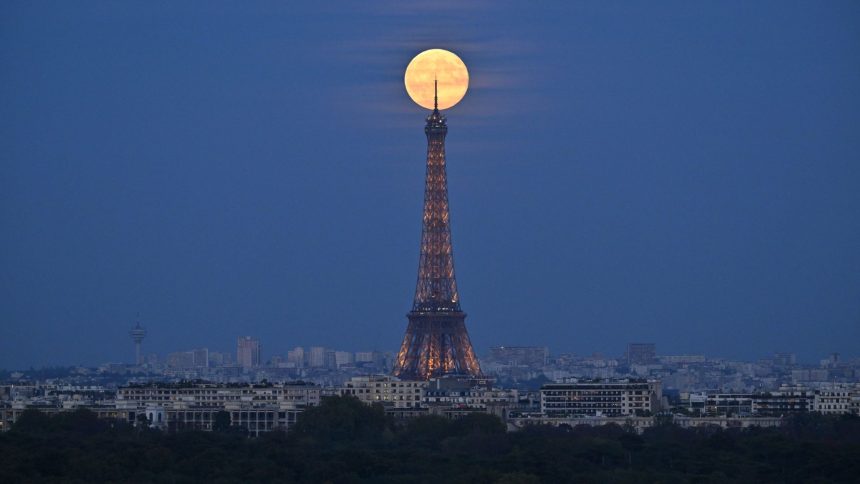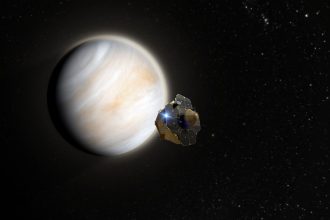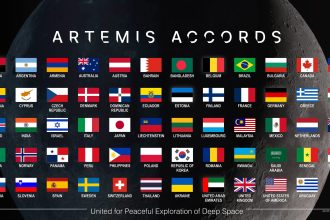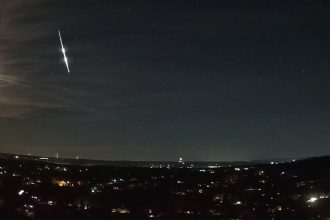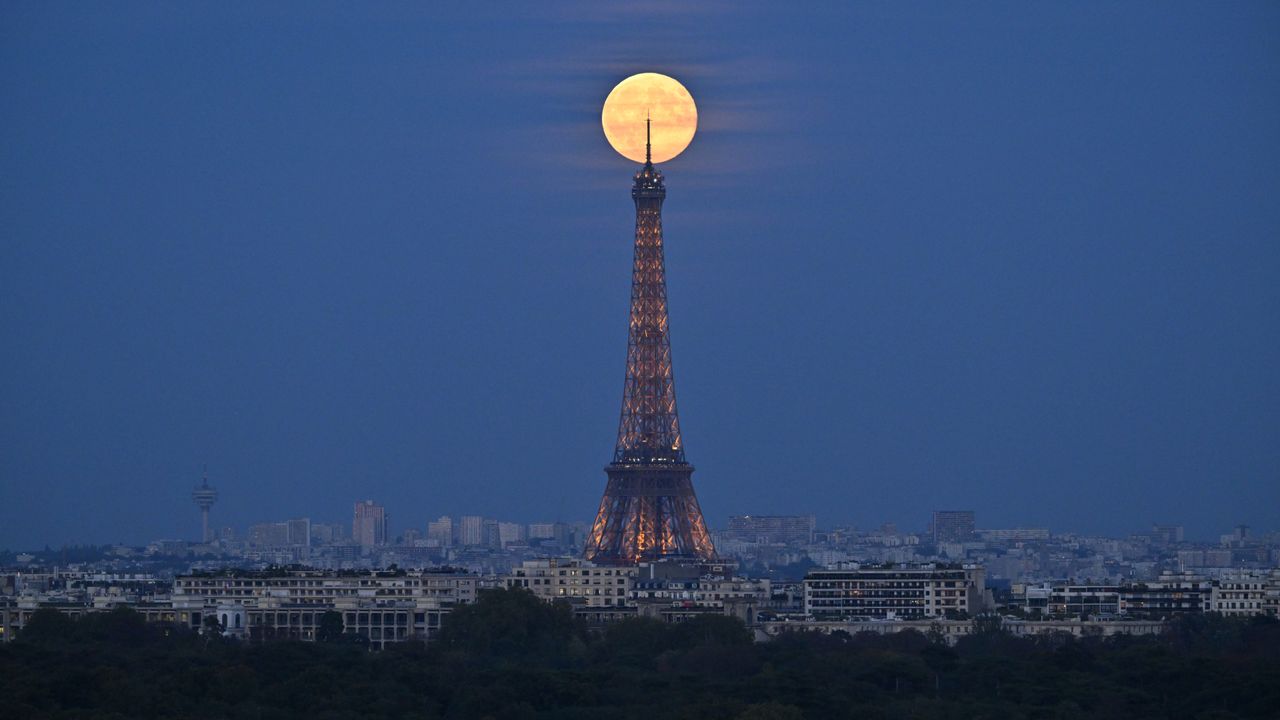
The biggest full moon of 2025, a so-called supermoon, will rise on Wednesday, Nov. 5, lighting up the night sky with its dramatic glow.
At 5:30 p.m. EST (2230 GMT), the moon will reach its closest point to the Earth for the year, known as perigee, at a distance of 221,726 miles (356,833 kilometers). Nine hours and 11 minutes prior to that, the moon will officially turn full. It will, in fact, be the biggest Though a full moon theoretically lasts just a moment, that moment is imperceptible to ordinary observation, and for a day or so before and after most will speak of seeing the nearly full moon as “full”: the shaded strip is so narrow, and changing in apparent width so slowly, that it is hard for the naked eye to tell whether that dark strip is present or on which side it is.
You may like
Bigger, brighter — or just hyperbole?
Most media outlets love to treat this as some sort of special or unusual occurrence. Upon hearing that a specifically selected moon comes with the prefix “super” attached, people rush outside to get a look and come away thinking that they have just witnessed something akin to a rare cosmic alignment. Such feelings put a new spin on the whimsical tale penned in 1837 by Hans Christian Anderson, “The Emperor’s New Clothes.”
While this will indeed be the “Biggest Full Moon of 2025,” the variation of the moon’s distance is not readily apparent to most observers viewing the moon directly. The moon comes to perigee once, occasionally twice a month (their respective distances vary by 3% percent), but as we just noted, this one will be the closest one in 2025. Next year, on May 31, full moon will coincide with apogee — its farthest point from Earth in its orbit — and it will appear about 14% smaller (what some call a “micro-moon”).
And then there is the other facet . . . the oft-told statistic that the moon is 30-percent brighter than normal. But that factors in only as a 0.2 or 0.3 magnitude difference in brightness; hardly perceptible at all to the human eye.
In fact, I once took a phone call at New York’s Hayden Planetarium from a young lady who sounded like she had been cheated. “I went outside last night to look at that so-called ‘super’ moon and was very much disappointed. It didn’t look at all brighter than normal.” When I queried her on what she had expected to see, she replied, “I thought it was going to be something like those three-way light bulbs. Like when you go from 100 to 150 watts; I thought the moon was going to appear noticeably brighter last night, but it really wasn’t at all!”
Of course, once somebody is told that the moon is closer-than-normal to Earth and consequently appears somewhat larger in apparent size, then they likely will respond with: “Oh yeah! It does look bigger than normal!” This is especially true if one sees the moon near the horizon, where the enigmatic “moon illusion” always comes into play. The fact that the moon will be much closer than usual on Wednesday will only serve to amplify this strange effect.
Large tides
In addition, the near coincidence of this full moon with perigee will result in a dramatically large range of high and low ocean tides. Any coastal storm at sea around this time would almost certainly aggravate coastal flooding problems at high tide, or, in the case of a strong wind pushing the water offshore, it would create a very low water situation at low tide.
Such an extreme tide is known as a perigean spring tide, the word spring being derived from the German springen — to “spring up,” and is not at all a reference to the spring season. Spring tides occur when the moon is either at full or new phase. At these times, the moon and sun form a line with the Earth, so their tidal effects add together (the sun exerts a little less than half the tidal force of the moon.) “Neap tides,” on the other hand, occur when the moon is at first and last quarter and works at cross-purposes with the sun. At these times tides are weak.
You may like
Tidal force varies as the inverse cube of an object’s distance. This month’s full moon is 12.2 percent closer at perigee compared to next May’s apogee full moon. Therefore, it will exert 46 percent more tidal force.
The highest tides will not, however, coincide with the perigee moon but will actually lag by one or two days, depending on the specific coastal location. For example, at Cape Fear, North Carolina, the highest tide (6.88 feet) will be attained at 7:20 a.m. EST on Thursday. For New York City, high water (6.34-feet) at The Battery comes at 7:59 a.m. EST on Thursday, while at Boston Harbor, a peak tide height of 12.22-feet comes at 11:54 a.m. EST on Friday, almost 2 days after perigee.
Too many supermoons?
And yet, if the criteria for the “super” branding is chiefly dependent on the moon’s arrival at its closest point in its orbit relative to the Earth, then it might be a bit of a misnomer. Indeed, the moon arrives at perigee point of its orbit every month, sometimes (as previously noted) twice a month.
Indeed, the full moons that immediately flank the full moon coinciding with perigee are now also being branded as supermoons. This year, for instance, the full moon that we had on Oct. 6 (the “Harvest Moon”) was deemed “super.” And so will the one next month on Dec. 4. Other years have four (such as in 2028 and 2034) and, in several cases, (as in the years 2029 through 2033) there can be as many as five!
So why can’t we have a supermoon at other phases? On Feb. 24, 2026, for instance, the first quarter moon will come within less than eleven hours of perigee. But nobody ever gets excited about a “super” half-moon.
The popular astrophysicist, Dr. Neil deGrasse Tyson, probably said it best:
“In the overall scheme of things, is this relatively small increase in the moon’s apparent size really so meaningful? I mean, if you turned a 14-inch pizza into a 15-inch pizza, would you then call it a “Super-pizza?”
Maybe when it comes to our natural satellite, size doesn’t really matter after all.
Joe Rao serves as an instructor and guest lecturer at New York’s Hayden Planetarium. He writes about astronomy for Natural History magazine, Sky and Telescope and other publications.


